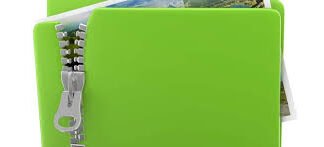Description
. . _ . . . . 1 1 1 1 1 1 1 2 2 2 2 3 3
W W W . . a . 1 2 2 2 2 3
W W W W . . . 1 2 2 2 3 3 3
W W W W . . _ 1 1 2 2 3 3
W g . . . . . 1 1 1 1 1 2 2 2 2 3 3
W W W W W W . 3
W W W W W W . 3
IPython Notebook from Lecture
http://nbviewer.ipython.org/urls/dl.dropbox.com/s/idsexzd9zvq09mc/Textbook.ipynb
Walkthrough
Step 1: Download the Potassco Tools
● Navigate to http://potassco.sourceforge.net/
● Find the clingo4.5.0 binaries for your platform, and download them.
● Unpack them to your project directory, and find the gringo, clingo, and reify
executables.
Step 2: Extract AnsProlog Programs from Example Code
● Copy/paste these files from the example IPython Notebook. Make sure the “%%file”
line at the top of the notebook cell is notincluded in the file contents.
○ levelcore.lp
○ levelstyle.lp
○ levelsim.lp
○ levelshortcuts.lp
Step 3: Test the Solver
● In your command line shell, execute a command equivalent to the following to make
sure you can run the solver (clingo) on some answer set programs. You may need to
change your working directory or specify an alternate path to the clingo executable.
● $ clingo levelcore.lp
● You should see output like this:
○ clingo version 4.5.0
Reading from levelcore.lp
Solving…
Answer: 1
param(“width”,10) tile((0,0)) tile((1,0)) tile((2,0)) tile((3,0))
tile((4,0)) tile((5,0)) tile((6,0)) tile((7,0)) tile((8,0)) tile((9,0))
tile((0,1)) tile((1,1)) tile((2,1)) tile((3,1)) tile((4,1)) tile((5,1))
tile((6,1)) tile((7,1)) tile((8,1)) tile((9,1)) tile((0,2)) tile((1,2))
tile((2,2)) tile((3,2)) tile((4,2)) tile((5,2)) tile((6,2)) tile((7,2))
tile((8,2)) tile((9,2)) tile((0,3)) tile((1,3)) tile((2,3)) tile((3,3))
tile((4,3)) tile((5,3)) tile((6,3)) tile((7,3)) tile((8,3)) tile((9,3))
tile((0,4)) tile((1,4)) tile((2,4)) tile((3,4)) tile((4,4)) tile((5,4))
tile((6,4)) tile((7,4)) tile((8,4)) tile((9,4)) tile((0,5)) tile((1,5))
tile((2,5)) tile((3,5)) tile((4,5)) tile((5,5)) tile((6,5)) tile((7,5))
tile((8,5)) tile((9,5)) tile((0,6)) tile((1,6)) tile((2,6)) tile((3,6))
tile((4,6)) tile((5,6)) tile((6,6)) tile((7,6)) tile((8,6)) tile((9,6))
tile((0,7)) tile((1,7)) tile((2,7)) tile((3,7)) tile((4,7)) tile((5,7))
tile((6,7)) tile((7,7)) tile((8,7)) tile((9,7)) tile((0,8)) tile((1,8))
tile((2,8)) tile((3,8)) tile((4,8)) tile((5,8)) tile((6,8)) tile((7,8))
tile((8,8)) tile((9,8)) tile((0,9)) tile((1,9)) tile((2,9)) tile((3,9))
tile((4,9)) tile((5,9)) tile((6,9)) tile((7,9)) tile((8,9)) tile((9,9))
sprite((4,0),altar) sprite((3,0),gem) sprite((1,0),trap)
sprite((2,0),trap)
SATISFIABLE
Models : 1+
Calls : 1
Time : 0.021s (Solving: 0.00s 1st Model: 0.00s Unsat: 0.00s)
CPU Time : 0.010s
Step 4: Capture One Example Output
● Execute a command equivalent to the following to save the output of one random run
of the solver to a text file. The “signdef=3” argument tells the solver to use a random
heuristic and “out=2” tells the solver to output in JSON format.
● $ clingo levelcore.lp levelstyle.lp levelsim.lp signdef=3 outf=2 > example.json
Step 5: Write a Python Program to Parse and Display the Dungeon
● Using the building blocks provided in the notebook, write a small Python program that
can visualize the dungeon named as a command line argument. It should be able to
be used like this:
● $ python p7_visualize.py example.json
Step 6: Test Shortcut-free Dungeon Generation
● Extract the metaS.lp file from the notebook.
● Find where the other meta*.lp files are located. Looking inside of the unpacked
archive, find a directory called examples/reify. It will provide meta.lp, metaD.lp and
metaO.lp.
● Execute a command equivalent to the following. Note the use of gringo instead of
clingo and the inclusion of levelshortcuts.lp in the first part of the pipeline. Adjust your
file paths as needed. Backslashes indicated escaped line breaks (this is all one single
command).
○ $ gringo levelcore.lp levelstyle.lp levelsim.lp levelshortcuts.lp \
| reify \
| clingo meta.lp metaD.lp metaO.lp metaS.lp \
parallelmode=4 outf=2
● Within a minute, the command should complete. Add “c width=7” to the arguments of
gringo if you want to generate a smaller map more quickly (7 is the smallest valid width
for these design requirements).
● Run this command again, but append “> example_noshortcut.json” to capture the
output in a file.
● Use your visualization program to visualize the generated shortcutfree dungeon.
Step 7: Create a Driver Program
● Create a new Python program, p7_driver.py, that knows how to execute the answer
set solver itself. Borrow the example usage of the subprocess module from the solve()
function given in the notebook. You may need to adjust the arguments to Popen to be
appropriate to your platform.
● Using a command like the following, the user should be able to generate and visualize
a new dungeon with a single command:
● $ python p7_driver.py
Step 8: Let’s Go to the Boardwalk (Let’s make the player touch all the traps.)
● Modify levelsim.py so that the player may only step on traps in state 2 (after picking
up the gem and before dropping it off). Do this by adding an integrity constraint that
rejects any solution where a trap tile is touched when S != 2.
● Modify the concept definition in levelshortcuts.lp to also ensure that every trap is
touched.
○ First, create a zeroargument predicate that detects if a trap was ever left
untouched:
■ a_trap_went_untouched : sprite(T,trap); not touch(T,2).
○ Next, modify the concept definition to require that this is not the case (keep the
existing conditions):
■ __concept : …, not a_trap_went_untouched.
● Generate and save a visualization of an example boardwalk map.
Requirements / Grading Criteria
● A valid example.json file describing a generated dungeon was generated.
● A dungeon visualization program that consumes JSON files was created.
● A valid example_noshortcut.json describing a generated shortcutfree dungeon was
generated.
● A driver program that generates and visualizes dungeons was created.
● A driver program that specifically uses the shortcutfree dungeon generator was
created.
● A boardwalk map was generated and visualized.


